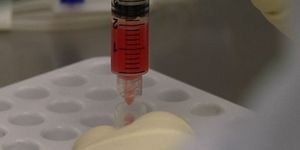While there are many neurodegenerative diseases that can devastate patients and families, Huntington’s disease remains one of the more severe conditions to impact the brain, and, in turn, the lives of family members and patients who must deal with it. Huntington’s disease is a progressive neurodegenerative disorder that shows up in patients between the ages of 30-50. The main manifestation of the disease is dementia. It creeps up slowly, gradually increasing in severity and ultimately leads to the patient needing full-time nursing care. The incidence of Huntington’s is one about every 10,000 to 15,000 people globally.
Huntington’s disease is genetic, and is caused by a mutation on the HD gene (also called the HTT gene) which is carried on chromosome 4. It’s what is known as an “autosomal dominant disease” which means that a single inherited gene that is defective will cause the disease to develop.
Mark Bevan, PhD, professor of Physiology at Northwestern University Feinberg School of Medicine and first author of the recent research at the university explained that while the roots of the disease are known, there is still much work to be done to figure out the underlying mechanisms of how it progresses. He stated, “Although the genetic basis of the disease is well established, why the mutation leads to the expression of symptoms and loss of brain tissue remains poorly understood.”
The symptoms of Huntington’s disease show up in adulthood, often in the patients who are young and in the prime of health. They involve a loss of motor and cognitive function, depression and personality changes. Once the disease has taken hold, symptoms will continue to get worse, usually over a period of 10-25 years, making it excruciating for families and patients to deal with. It’s always fatal, and death is often from complications of the disease including organ failure and infection.
Bevan explained that his study focused on the subthalamic nucleus, which is an area that has been overlooked in previous studies. He wrote, “While research into Huntington’s disease has focused on other parts of the basal ganglia, the subthalamic nucleus has been largely overlooked. This is surprising because patients with Huntington’s disease have fewer nerve cells in the subthalamic nucleus. People who have suffered damage to the subthalamic nucleus exhibit excessive movement and impulsive behavior, similar to patients with Huntington’s disease.”
The research involved mice, who had been genetically altered to carry the Huntington’s mutation. In the mouse model it was shown that the electrical activity of the subthalamic nucleus was essentially gone. In addition, there was “impaired anomalous receptor signaling, leading to defective energy metabolism and accumulation of damaging oxidants.” What all this means is that a new region of the brain has yielded clues to the progressive degeneration of tissue that happens in Huntington’s disease. With the mouse model showing similar pathology to what happens in humans with Huntington’s, there is now a new way forward in research into Huntington’s. There is currently no cure for the disease and treatments are limited in the symptoms they can relieve. With more research into brain signaling, hopefully a new target for treatments can be developed. Check out the video below to learn more about the research and what scientists can look at in future projects seeking information and answers to this devastating neurological condition.
Sources: Northwestern, UPI, eLife, Your Genome









